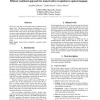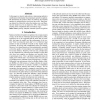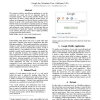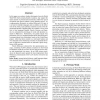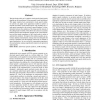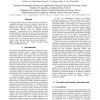INTERSPEECH
2010
13 years 6 months ago
2010
This paper presents a study on the use of deep syntactical features to improve prosody modeling 1 . A French linguistic processing chain based on linguistic preprocessing, morphos...
INTERSPEECH
2010
13 years 6 months ago
2010
This paper reports our recent exploration of the layer-by-layer learning strategy for training a multi-layer generative model of patches of speech spectrograms. The top layer of t...
INTERSPEECH
2010
13 years 6 months ago
2010
We focus in this paper on the named entity recognition task in spoken data. The proposed approach investigates the use of various contexts of the words to improve recognition. Exp...
INTERSPEECH
2010
13 years 6 months ago
2010
In this paper we describe and analyze a data pruning method in combination with template-based automatic speech recognition. We demonstrate the positive effects of polishing the t...
INTERSPEECH
2010
13 years 6 months ago
2010
In this paper, we present efficient HMM-based techniques for estimating missing features. By assuming speech features to be observations of hidden Markov processes, we derive a mi...
INTERSPEECH
2010
13 years 6 months ago
2010
The context in which a speech-driven application is used (or conversely not used) can be an important signal for recognition engines, and for spoken interface design. Using large-...
INTERSPEECH
2010
13 years 6 months ago
2010
In this paper, we analyze whether dictionaries from the World Wide Web which contain phonetic notations, may support the rapid creation of pronunciation dictionaries within the sp...
INTERSPEECH
2010
13 years 6 months ago
2010
The semantic frame based spoken language understanding involves two decisions
INTERSPEECH
2010
13 years 6 months ago
2010
The perceived quality of a synthetic visual speech signal greatly depends on the smoothness of the presented visual articulators. This paper explains how concatenative visual spee...
INTERSPEECH
2010
13 years 6 months ago
2010
Continuous speech input for ASR processing is usually presegmented into speech stretches by pauses. In this paper, we propose that smaller, prosodically defined units can be ident...

